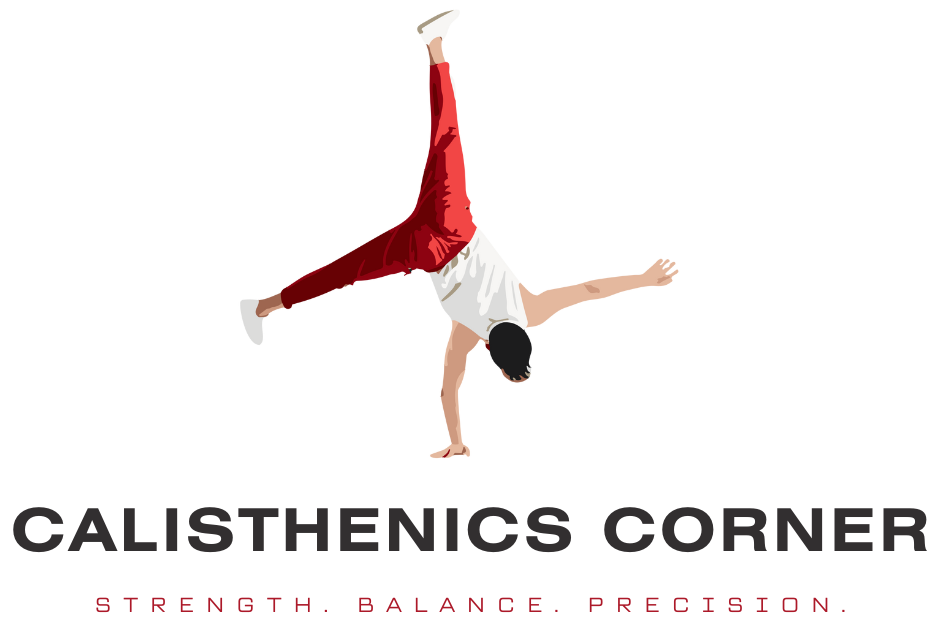Are you wondering how often you should be incorporating calisthenics into your fitness routine? In this article, we will explore the optimal frequency for practicing calisthenics to maximize results and improve overall fitness. Whether you’re a beginner looking to get started or a seasoned calisthenics enthusiast, understanding the ideal number of times to do calisthenics will help you design an effective workout plan tailored to your goals. So let’s dive in and discover the perfect frequency for your calisthenics workouts!
Setting Goals
Determining Your Fitness Goals
When starting a fitness journey, it’s important to first determine your fitness goals. Do you want to lose weight, increase muscle mass, improve flexibility, or enhance overall physical fitness? Defining your goals will help you create a more targeted and effective workout plan.
Considering Time Commitment
Another factor to consider is the amount of time you can commit to your workouts. Are you able to exercise daily, or do you have a more restricted schedule? Understanding your time limitations will help you design a realistic workout routine that fits into your lifestyle.
Acknowledging Physical Limitations
It’s crucial to acknowledge and respect your physical limitations. If you have any pre-existing injuries or medical conditions, it’s essential to consult with a healthcare professional before embarking on any new fitness regimen. They can provide guidance on exercises that are safe for you and help you achieve your goals without causing harm.
Factors to Consider
Current Fitness Level
Evaluating your current fitness level is necessary to determine the appropriate intensity and duration of your calisthenics workouts. If you’re a beginner, you’ll need to start with simpler exercises and gradually progress to more challenging ones. On the other hand, if you’ve been consistently exercising, you can incorporate more advanced movements into your routine.
Age and Gender
Age and gender can also affect the frequency and intensity of your calisthenics workouts. Generally, younger individuals tend to have a higher fitness capacity and can handle more intense exercises. However, this doesn’t mean that older individuals cannot engage in calisthenics; they may just need to adjust the workout intensity and duration based on their age and fitness level.
Training Experience
Your training experience plays a significant role in determining how often you should do calisthenics. If you’re new to exercise, it’s essential to start with a lower frequency and gradually increase as your body adapts. On the other hand, if you’re more experienced, you may be able to handle a higher frequency and intensity of workouts.
Commitment and Consistency
Commitment and consistency are key to achieving your fitness goals. Consistently engaging in calisthenics workouts will yield better results compared to sporadic or irregular workouts. Therefore, it’s essential to assess your level of commitment and choose a workout frequency that you can realistically stick to in the long run.
General Guidelines
Frequency
The frequency at which you should do calisthenics depends on your goals and current fitness level. As a general guideline, beginners can start with two to three sessions per week, allowing for sufficient recovery between workouts. Intermediate individuals may benefit from three to four sessions per week, while advanced individuals can train up to five to six times per week. However, it’s important to listen to your body and avoid overtraining.
Intensity
The intensity of your calisthenics workouts should challenge your muscles but not cause excessive strain or pain. Beginners should focus on mastering proper form and technique before increasing the intensity. Intermediate individuals can gradually incorporate more challenging variations and increase the difficulty of exercises. Advanced individuals can push their limits and perform high-intensity workouts to continue progressing.
Duration
The duration of your calisthenics workouts should be appropriate for your fitness level and goals. Beginners can start with shorter sessions, lasting around 30 minutes, and gradually increase the duration as their fitness improves. Intermediate individuals can aim for 45-60 minute sessions, while advanced individuals can engage in longer sessions, reaching up to 90 minutes. However, always prioritize quality over quantity, ensuring proper rest and recovery.
Beginners
Building a Foundation
For beginners, building a strong foundation is crucial. Start by learning the basic calisthenics exercises, such as squats, push-ups, lunges, and planks. Focus on mastering proper form and technique before moving on to more advanced movements. Incorporate strength training and flexibility exercises to improve overall fitness and prevent injuries.
Starting Slowly
As a beginner, it’s essential to start slowly and gradually increase the intensity and duration of your workouts. Rushing into intense exercises can lead to injuries and burnout. Begin with shorter, low-intensity sessions and gradually progress as your body adapts. Remember, consistency is key, so prioritize regular workouts over sporadic intense sessions.
Importance of Rest Days
Rest days are just as important as workout days, especially for beginners. Allow your body time to recover and repair between workout sessions. Rest days help prevent overuse injuries and promote muscle growth. On rest days, engage in light activities such as walking or stretching to promote blood flow and aid in recovery.
Intermediate
Increasing Frequency and Intensity
Intermediate individuals can increase the frequency and intensity of their calisthenics workouts to continue progressing. Aim for three to four sessions per week, allowing for adequate recovery between workouts. Gradually incorporate more challenging exercises, such as handstand push-ups, pistol squats, and muscle-ups. This progression will help build strength and endurance.
Adding Variety to Workouts
To keep your workouts engaging and prevent plateauing, add variety to your calisthenics routine. Incorporate different exercises, variations, and training methods such as supersets or circuits. This variety challenges your muscles in different ways and prevents adaptation, leading to continued progress and improvement.
Progressive Overload
Progressive overload is essential for intermediate individuals to continue improving. This involves gradually increasing the difficulty or intensity of your exercises over time. For example, you can add resistance bands, increase the range of motion, or reduce rest times between sets. Progressive overload stimulates muscle growth and strength gains.
Advanced
Specific Goals and Training Splits
Advanced individuals often have specific goals they want to achieve through calisthenics, such as mastering advanced skills like the planche or front lever. To focus on these goals, incorporate specific training splits into your routine. This involves dedicating separate workout sessions to target different muscle groups or skills throughout the week.
Periodization and Deloading
Periodization is crucial for advanced individuals to prevent overtraining, plateaus, and injuries. Incorporate periods of higher intensity and volume followed by lower-intensity recovery periods. This cycling approach allows your body to adapt and avoid stagnation. Additionally, plan regular deloading weeks, where you reduce training volume to promote recovery and prevent burnout.
Cross Training
Cross training is beneficial for advanced individuals to enhance overall fitness and prevent overuse injuries. Incorporate other forms of exercise, such as yoga, Pilates, or cardiovascular activities, to improve flexibility, cardiovascular health, and muscle balance. Cross training provides a well-rounded approach to fitness and helps break plateaus.
Adapting to Personal Needs
Listening to Your Body
No matter your fitness level, it’s important to listen to your body and adjust your workouts accordingly. If you’re feeling excessive fatigue or pain, it may be a sign to reduce intensity or take a rest day. Conversely, if you’re feeling energized and ready for a challenge, you can increase the intensity or try new exercises. Pay attention to how your body responds and make adjustments as necessary.
Modifying Frequency
Life can be unpredictable, and there may be times when you’re unable to stick to your regular workout frequency. It’s okay to modify your workout schedule to accommodate these changes. If you’re unable to maintain your usual frequency, focus on maintaining consistency and adjusting accordingly. Even short, intense workouts can be effective if done consistently.
Personalizing Workouts
Every individual is unique, and what works for one person may not work for another. Personalize your workouts based on your goals, preferences, and physical abilities. Experiment with different exercises, training methods, and workout structures to find what suits you best. By tailoring your workouts to your personal needs, you’ll stay motivated and enjoy the journey.
Seeking Professional Advice
Consulting a Fitness Trainer
If you’re unsure about how to structure your calisthenics workouts or want expert guidance, consider consulting a fitness trainer or coach. They can assess your fitness level, discuss your goals, and design a personalized workout plan that aligns with your needs. A trainer can also provide proper instruction on exercise technique and help you progress safely.
Getting a Customized Plan
For a more individualized approach, you can opt for a customized workout plan created by a fitness professional. These plans take into account your specific goals, current fitness level, and any limitations you may have. With a customized plan, you’ll have a clear roadmap to follow, ensuring that your workouts are targeted and effective.

Tracking Progress
Keeping a Training Log
Tracking your progress is essential to evaluate the effectiveness of your workouts and make necessary adjustments. Keep a training log where you record your exercises, sets, reps, and any notes on how the workout felt. This log allows you to track improvements in strength, endurance, and technique over time.
Assessing Performance
Regularly assess your performance by setting goals and periodically testing your progress. This could include measuring your time for a specific exercise, tracking the number of reps you can do, or monitoring your body measurements. Assessing your performance keeps you motivated and helps identify areas for improvement.
Making Adjustments
Based on your progress assessments and personal experiences, be open to making adjustments to your workout routine. If you’re not seeing the desired results, consider modifying the frequency, intensity, or exercise selection. Adapt your workouts as needed to continue challenging your body and reaching your fitness goals.
Conclusion
Determining the frequency at which you should do calisthenics depends on various factors, including your goals, fitness level, and personal circumstances. Beginners should start with two to three sessions per week, gradually increasing as they become more experienced. Intermediate individuals can aim for three to four sessions, while advanced individuals can train five to six times per week. It’s crucial to listen to your body, respect your physical limitations, and prioritize consistency for long-term success. Remember to personalize your workouts, seek professional advice when needed, track your progress, and make adjustments along the way. With these guidelines and a positive mindset, you can progress and achieve your fitness goals through calisthenics.








